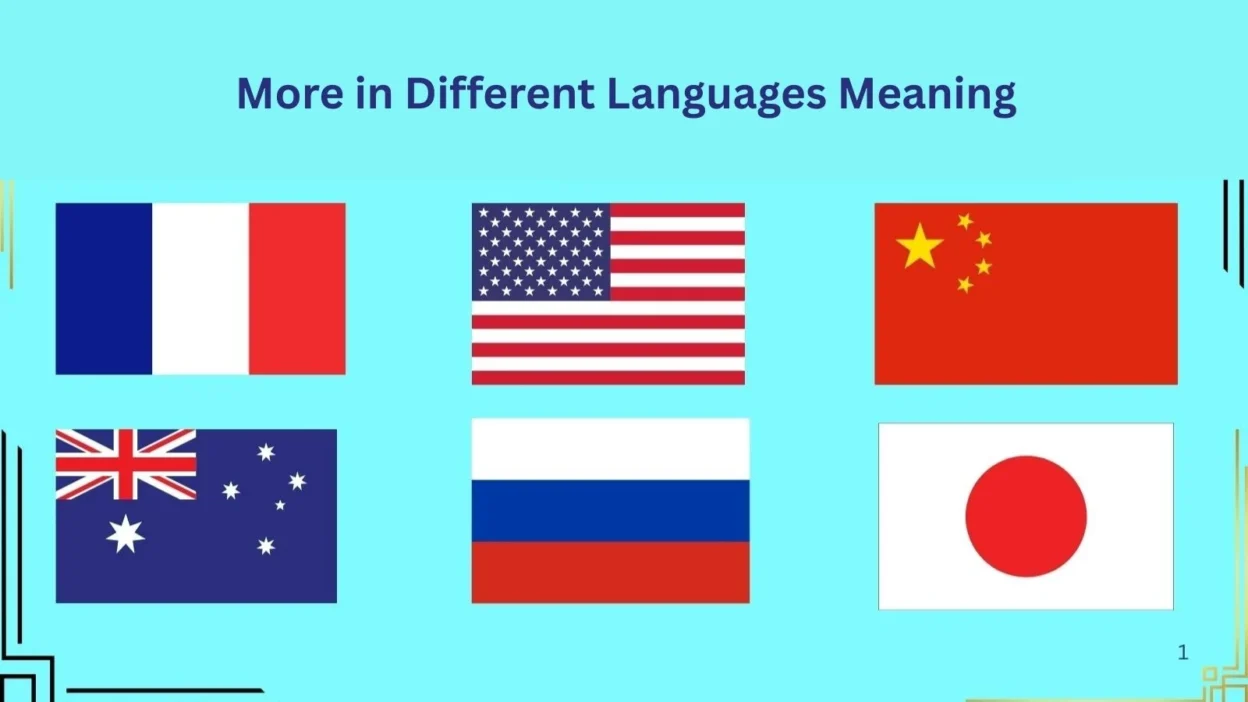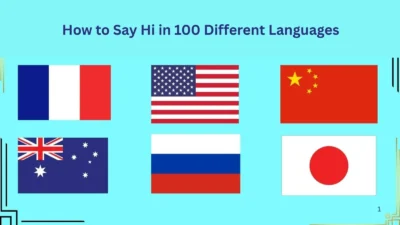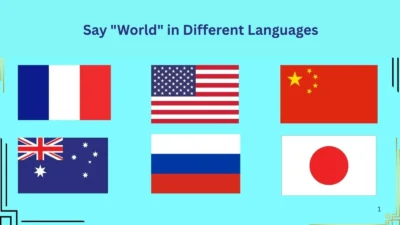Why Are People Searching for “More in Different Languages”?
Have you ever found yourself in a new country, wanting just a little more of something—more water, more food, more information—but didn’t know how to say it in the local language?
If you’re here, chances are you’re a traveler, language learner, or simply curious about how to say this common yet powerful word—“more”—in different languages.
This guide is designed to help you learn, understand, and use the word “more” across many cultures, with proper meanings and usage examples. Whether you’re speaking to a waiter, making friends abroad, or expanding your vocabulary, you’ll walk away confident in expressing more—in more ways than one.
🧠 What Does “More” Mean?
The word “more” typically means:
- A greater quantity or amount of something
- Something additional or extra
- In comparisons, it denotes a higher degree of something (e.g., more beautiful, more helpful)
It’s used in various contexts such as:
- Food: Can I have more rice?
- Time: I need more time.
- Comparison: She is more talented than him.
🌐 Why Learn “More” in Other Languages?
Knowing how to say “more” in different languages helps:
- Enhance communication in multilingual environments
- Build better travel experiences
- Improve your language skills
- Show respect and interest in another culture
- Help in customer service, international business, or even watching foreign films
📘 How to Use “More” in Daily Conversations
Here are a few common sentence structures you’ll often use:
- Can I have more ___?
- Do you have more information?
- I want to learn more.
- More people are coming.
- This is more difficult than expected.
🌍 “More” in 50+ Languages
Here’s how to say “more” in different languages, along with pronunciation where helpful:
| Language | Word for “More” | Pronunciation (Approx.) |
| Spanish | más | mahs |
| French | plus | ploos |
| German | mehr | mehr |
| Italian | più | pyoo |
| Portuguese | mais | mys |
| Russian | больше (bol’she) | bol-sheh |
| Chinese (Mandarin) | 更多 (gèng duō) | guhng dwaw |
| Japanese | もっと (motto) | moht-toh |
| Korean | 더 (deo) | duh |
| Hindi | और (aur) | or |
| Urdu | زیادہ (ziyada) | zia-da |
| Arabic | أكثر (akthar) | ak-thar |
| Turkish | daha | dah-ha |
| Greek | περισσότερο (perissótero) | peh-ree-so-te-ro |
| Swahili | zaidi | zay-dee |
| Dutch | meer | mehr |
| Hebrew | יותר (yoter) | yo-ter |
| Polish | więcej | vyen-tseh |
| Thai | มากขึ้น (mâak khûen) | maak kuen |
| Indonesian | lebih | luh-bee |
| Vietnamese | hơn | hern |
| Bengali | আরও (aro) | a-ro |
| Filipino (Tagalog) | higit | hee-git |
| Persian (Farsi) | بیشتر (bishtar) | beesh-tar |
| Romanian | mai mult | my molt |
| Malay | lebih | luh-bee |
| Czech | více | vee-tseh |
| Finnish | enemmän | eh-ne-man |
| Swedish | mer | mehr |
| Norwegian | mer | mehr |
| Danish | mere | meh-reh |
| Hungarian | több | toebb |
| Ukrainian | більше (bil’she) | beel-sheh |
| Slovak | viac | vyats |
| Croatian | više | vee-sheh |
| Serbian | више (više) | vee-sheh |
| Bulgarian | повече (poveche) | po-veh-cheh |
| Estonian | rohkem | rohk-em |
| Latvian | vairāk | vai-rahk |
| Lithuanian | daugiau | dow-gyow |
| Icelandic | meira | may-rah |
| Afrikaans | meer | meer |
| Hawaiian | hou aku | hoh ah-koo |
| Maori | ake | ah-keh |
| Basque | gehiago | geh-ah-go |
🎯 Practical Examples in Different Languages
- Spanish: ¿Puedo tener más agua? (Can I have more water?)
- French: Je veux plus d’informations. (I want more information.)
- German: Ich brauche mehr Zeit. (I need more time.)
- Hindi: मुझे और चाहिए। (Mujhe aur chahiye – I want more.)
- Japanese: もっとください。 (Motto kudasai – Please give me more.)
🔚 Conclusion:
The word “more” might seem simple, but it carries a lot of weight in communication. Whether you’re asking for more food, expressing deeper feelings, or seeking greater understanding, knowing how to say “more” in different languages can open new doors of connection.
Bookmark this page, practice a few translations, and the next time you’re abroad—or even online—you’ll know exactly how to say “more”.



